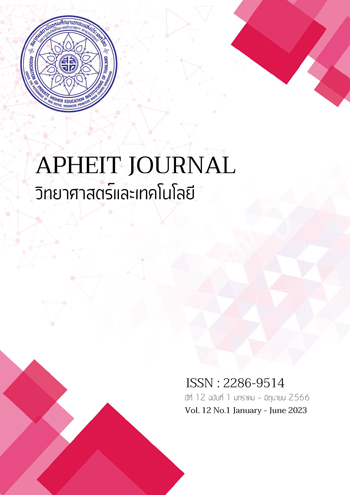Working Posture Improvement of Lanna-Lamp Production Using Ergonomics Case Study: Elderly Women
คำสำคัญ:
Risks of Working Posture, RULA Method, REBA Methodบทคัดย่อ
This research aimed to reduce the risk level of working posture among elderly women in Lanna-Lamp production. The Rapid Upper Limb Assessment (RULA) and REBA (Rapid-Entire Body Assessment) methods were used to assess the risk of working posture. The results showed that the risk of working posture in elderly women was high (RULA score = 7, REBA score = 10) , and that elderly women had the highest level of low back injury and fatigue, followed by lower back pain the shoulder, hand/wrist area, respectively. In the experiment, the operating table was improved at 4 points, namely adding arm rests adding caps to cover the top and bottom of table legs, adding the level to hang the Lanna lantern frame and adding foam to cover the end of the steel. The result showed that risk level of working posture by Rapid Upper Limb Assessment (RULA) was reduced by 4 levels (from 7 points to 3 points) and the risk level by REBA method (Rapid-Entire Body Assessment) was reduced by 8 levels (from 10 points to 2 points). which also resulted in less injury and fatigue levels. It also had the highest level of user satisfaction





